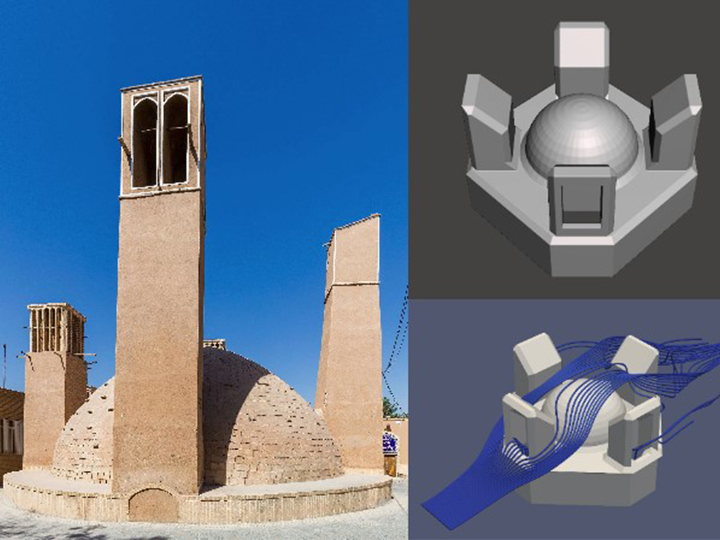
Rodolfo Ostilla-Mónico, assistant professor of mechanical engineering, was thrilled when the HPE Data Science Institute awarded him seed funding for a project that involved sustainable HVAC systems. These designs were based on Persian architecture.
Ostilla-Mónico’s research is focused on windcatchers, structures that provide an efficient way of ventilating and conditioning buildings. With the help of the HPE Data Science Institute, he was able to hire an undergraduate student for the summer who had great talent in the area of computer-aided design.
“We were able to develop and simulate a series of barebones models, and we were able to isolate which designs were the most efficient in generating downdrafts. Now we are printing out the best of these models and placing them inside a wind tunnel to validate their performance,” said Ostilla-Mónico.
The research conducted not only provided them with the three-dimensional designs, but also gave them indications of what design principles worked the best – and what they should have been measuring when quantifying ventilation and thermal measurements.
Ostilla-Mónico’s research is important and gaining recognition as it continues.
"While the simulations are useful in narrowing down a large parameter space, without the wind tunnel experiments we would not be able to show potential partners that things work outside the computer screen," said Ostilla-Mónico.